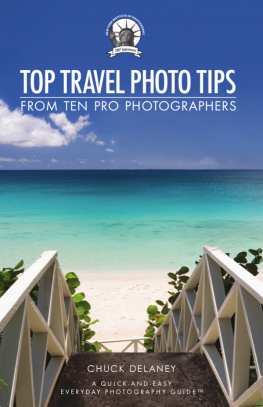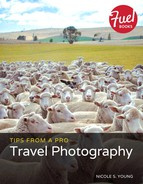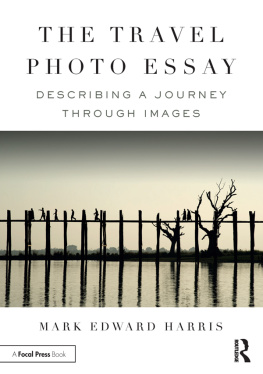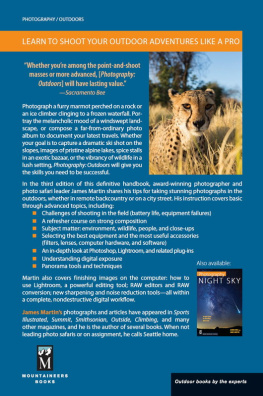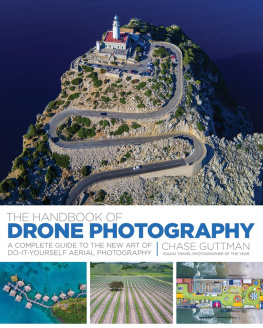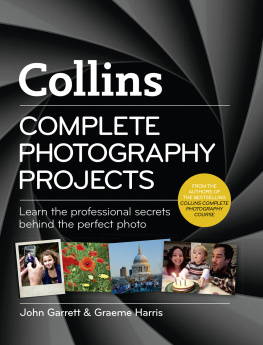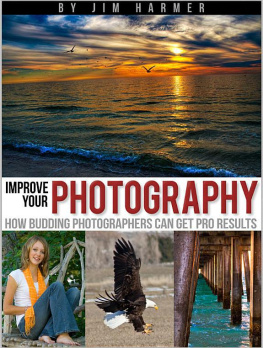
TOP TRAVEL PHOTO TIPS
FROM TEN PRO PHOTOGRAPHERS
A QUICK-AND-EASY EVERYDAY PHOTOGRAPHY GUIDE
CHUCK DELANEY

Special Thanks to the ten distinguished photographers who gave us permission to interview them for this book and reprint their amazing travel images. Each photographer holds all rights to her or his respective photographs .
Front Cover Image Marc Muench
Back Cover Images (top to bottom) Chase Guttman,
Peter Guttman, Michael Doven, and Larry Louie
Michael Doven (pages 12 to 21) Michaels picture Alex Lake
www.michaeldoven.com
Wendy Connett(pages 22 to 31) Wendys picture Esteban Lartigau
www.wendyconnett.com and escapenewyork.blogspot.com
Larry Louie(pages 32 to 41)Larrys picture Joanna Wong-Louie
www.larrylouie.com
Chase Guttman(pages 42 to 51) Chases picture Peter Guttman
www.chaseguttman.com
Mitchell Kanashkevich (pages 52 to 61)
www.mitchellkphotos.com and www.mitchellkphotos.com/blog
Marc Muench(pages 62 to 70) Marcs picture Andy Williams
www.muenchphotography.com
Nadia Shira Cohen(pages 72 to 81)Nadia s picture Paulo Siqueira
www.nadiashiracohen.com
Tom Robinson (pages 82 to 91)
www.tomrobinsonphotography.com
Jesse Kalisher(pages 92 to 101) Jesses picture David Winton
www.kalisher.com and www.kalisher.com/photo_blog
Peter Guttman(pages 102 to 111) Peters picture Peter Guttman
www.peterguttman.com
2012 New York Institute of Photography
All rights reserved. Copyright under Berne Copyright Convention, Universal Copyright Convention, and Pan-American Copyright Convention. No part of this book may be reproduced, stored in a retrieval system, or transmitted in any form, or by any means, electronic, mechanical, photocopying, recording, or otherwise, without prior permission of the publisher .
12 13 14 15 16 17 18 19 20 21 10 9 8 7 6 5 4 3 2 1
Published byAllworth Press
An imprint of Skyhorse Publishing, Inc .
307 West 36th Street, 11th Floor
New York, NY 10018
www.shyhorsepublishing.com and www.allworth.com
Copublished by New York Institute of Photography
New York Institute of Photography is a registered trademark of
Distance Education Co. LLC in the United States and/or other countries
211 East 43rd Street, Suite 2402
New York, NY 10017
www.nyip.com, blog.nyip.com, and www.decnyc.com
Covers and Interior Page Design by Keith Gallagher Editorial Writing by Sarah Van Arsdale NYIP Publisher: Jay Johnson NYIP Director: Chuck DeLaney
Library of Congress Cataloging-in-Publication Data has been applied for and is on file with the Publisher .
ISBN: 978-1-58115-995-0
Printed in China .
Contents

Peter Guttman
Taking a Trip? Start Here.
My guess is that you have this NYIP Quick-and-Easy Everyday Photography Guide because youre excited about an upcoming trip youve been planning for awhile. Travel is certainly popular, as over 80% of families and individuals will be traveling on holiday for two or more weeks this year. No doubt you want to take really wonderful photographs of your experiences, show your family and friends the most remarkable aspects of your journey, and preserve those memories for everyone to enjoy later on.
Well, for anyone who wants to take better travel pictures, this is the book for you. Ive interviewed ten professional photographerseach one outstanding and well traveled and asked them to share their favorite tips and techniques for taking great travel photographs.
Many non-professionals believe that pro photographers bring home great images from their excursions because theyve invested thousands of dollars in their equipment. The widespread belief is that the average shutterbug cant possibly capture wonderful images. I want this book to debunk the myths!
Id estimate that 85% of all great travel images can be taken with a basic digital SLR (single lens reflex) or high-performance point-and-shoot model camera. The trick is to learn to see like a photographer. Thats a theme well return to again and again in this book.
In fact, at the New York Institute of Photography, the worlds oldest and largest school of photography, we have a saying that we keep reciting to students from the very beginning of their studies.
Its not the violin, its the violinist.
What do we mean by that? People are more important than musical instruments or photography equipment. Camera manufacturers want you to think that the trick to taking great photographs lies in buying the latest camera with more megapixels, more dials, and more features. Pretty soon, theyll have a camera on the market that can monitor your blood pressure, check your email, and maybe even scratch your back! You know what? You dont need all those bells and whistles.
Consider this: I cant play the violin. If I go out and buy a great violin, even shell out $2 million for a Stradivarius (there are only about 650 of them left on the planet from Stradivaris workshop in the late 1600s), I still wont be able to play the violin! I need to learn how to play the violin, not buy an expensive violin and think it will do the job for me. If I dont take the responsibility to learn how to play the violinand practice playing itthen it doesnt matter if I have an inexpensive instrument or a priceless antique. So it is with photography. I bet right now your camera is better at doing its job than you are at controlling it. Todays digital models are very, very sophisticated instruments. Would you hand the keys of a high-powered Ferrari over to a 16 year old who just got a learners permit? I dont think so.
Thats why were going to teach you how to take control of your camera. Were also going to help you discover the elements that go into a great photograph. But most of all, were going to help you develop the Eye of the Photographerthat special skill that will allow you to see possibilities for great photos in the scene in front of you that you would have otherwise missed. And this is particularly handy while traveling. Seeing opportunities to take great photographs will also help you better appreciate the beauty and spontaneity of people and scenery and sights and events around you as you journey through life.
True
There are some photos that require expensive gear-capturing the condor soaring high above the Andes may require a telephoto lens, for example. Michael Dovens amazing Everest Valley photograph on page 18 of this book was shot using the latest Nikon equipment from 18,000 feet in the air, as his rented helicopter flew between Kathmandu, Nepal to a Mt. Everest base camp.
Also True
Most great travel photos can be taken with basic digital cameras.
Well also take up some technical photography matters, but its important that you understand that those are in many ways secondary to seeing the possibilities in front of your camera. After all, if you cant see the photos, you cant capture them no matter how much technique and gear you have.
Because its so important, please permit me one more story to illustrate Its not the violin, its the violinist concept. In my professional career, I concentrated on photographing dancers and musicians, along with photojournalism, travel, and general portraiture. Working with dancers has always been a pleasure, theyre very conscious of their craft, and since their art is performance-based, theyre very grateful to photographers who can capture the essence of their talent and skill.
Next page
